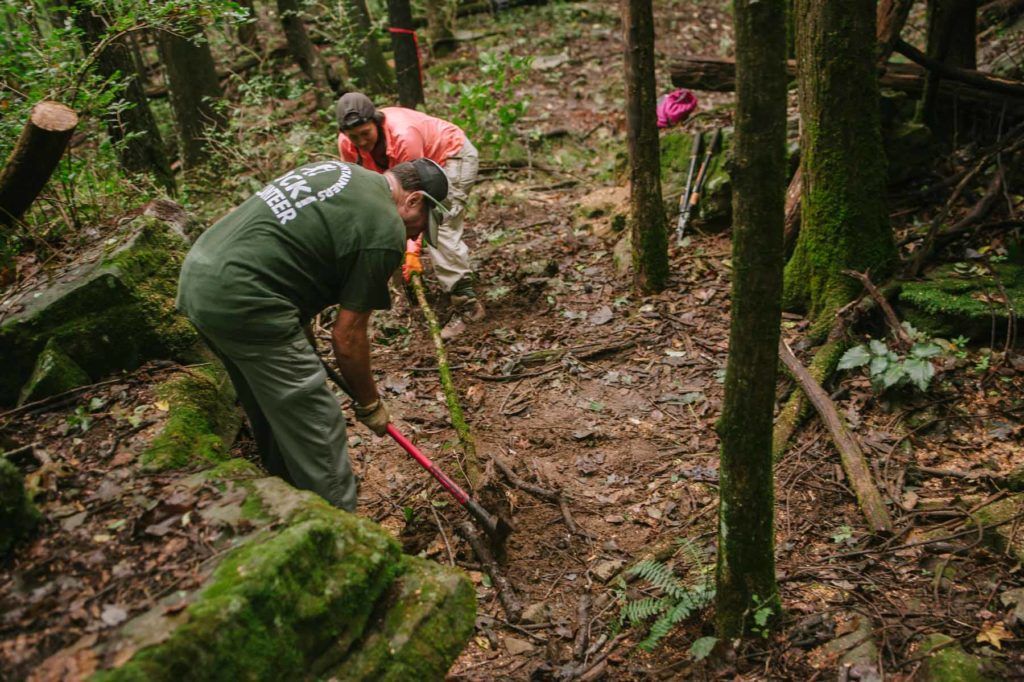Sustainable Trails: Constructing Elevated Trail Treads

One of the most common challenges facing the Land Trust when building trails on our hillsides is the sloping, rocky terrain. When establishing trails in these areas, we look to place trails where water flow can be managed and trail treads (the defined pathway for trail users) can be leveled with an artificial bench cut to make it easy to walk across the sloping land.
These bench cuts are manually created flat sections of trail that allow water to flow across the trail rather than down it. These efforts can be accomplished by hand or mechanized equipment, whichever is most appropriate for the terrain. In other sections of our hilly terrain, we can sometimes place trails in areas known as benches which are naturally narrow, flat areas of the hillside. However, these trail locations can present their own challenges with the flatness of the terrain and the soil composition holding water and leaving the trail surface muddy and susceptible to erosion. In any case, there are times where a trail surface must be built up or elevated to be sustainable, requiring minimal maintenance over time.
Once a trail corridor is identified for construction or repair, first a bench cut is made if necessary. Then materials, such as gravel or other larger rock, can be brought in to cover the trail surface. However, if this option is impractical due to remoteness or inaccessibility, local material adjacent to the trail location can be collected to serve the same purpose. The goal is to raise the trail tread sufficiently using porous rock material that allows water to flow or percolate through the terrain without adversely affecting the trail tread itself.
[envira-gallery id=”4590″]
Once the rock bed is established, the material is covered with a geotextile fabric. The rock and fabric are then covered over with natural soil material. The purpose of the fabric is to prevent the soil material from percolating down into the stone cracks, crevices and crannies, and blocking any water flow from passing through the stone and away from the trail. The length and width of the elevated trail section is determined by the intended use of the trail, what the terrain will allow you to do, the materials available, and the logistics for installation.
Elevated trail treads can make crossing rocky terrain, muddy flats and seasonally wet areas practical and sustainable. Trails such as these make normally inaccessible areas accessible. Installed properly, an elevated trail tread will last for years with minimal maintenance and that is what sustainable trail building is all about.
Want to volunteer to help improve and expand our trails? You can find details at landtrustnal.org/volunteer and upcoming trail care work days on our event calendar.
Want to learn more? Check out other posts in our Sustainable Trails Series:
Sustainable Trails: Creating Lasting Connections
Sustainable Trails: Bridges & Boardwalks
This post is part of a series highlighting Land Trust of North Alabama’s commitment to sustainable trail building in an effort to ensure the long-term sustainability of our trails. Funding provided through a Restoration and Resilience Grant from the National Environmental Education Foundation (NEEF), with major funding support from Toyota Motor North America supports current trail restoration projects on Monte Sano Nature Preserve and public education about the importance of responsible construction, maintenance, and trail use.